Acrylic primer: product features and all the subtleties of choice
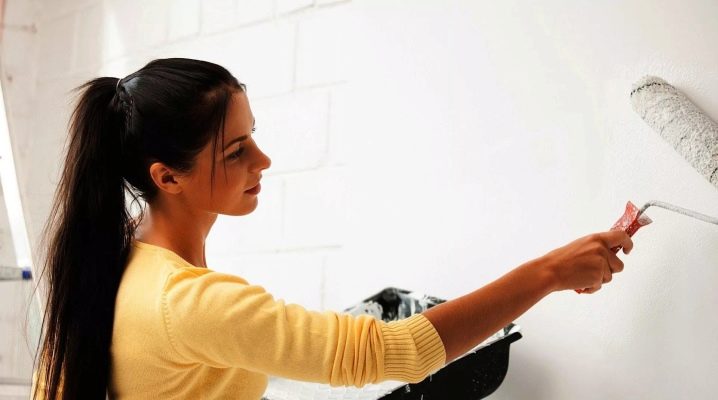
Carrying out repair work according to the rules can significantly improve the performance characteristics of finishing materials. The focus is on the acrylic primer, which the craftsmen attach particular importance to today. To understand what attracts this material to professionals, we will understand its features and study the subtleties of choice.
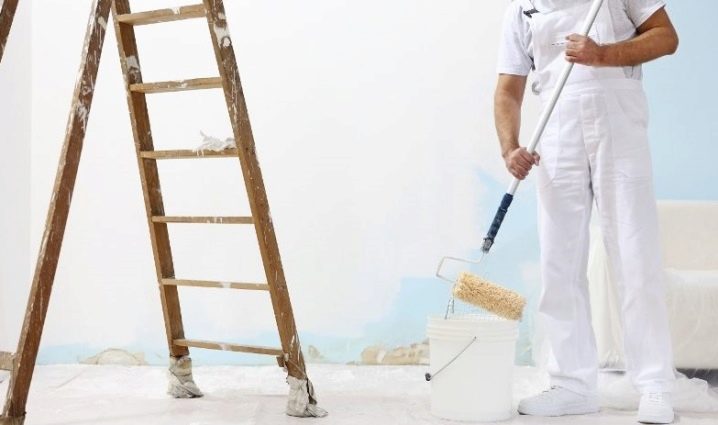
Peculiarities
Acrylic primer is a building material for processing vertical and horizontal surfaces, which is necessary for maximum adhesion of the facing material to the treated surface. In other words, the soil makes it possible for wallpaper, tiles or other materials to hold firmly and reliably, excluding the lag of finishing building materials from the processed base.
It is used for walls, floors and ceilings, processing the surface in about a day for gluing, laying or painting. With the advent of this material, the possibilities of finishing work have significantly increased. Today, processing of planes with decorative plaster, putty, paint cannot do without it.

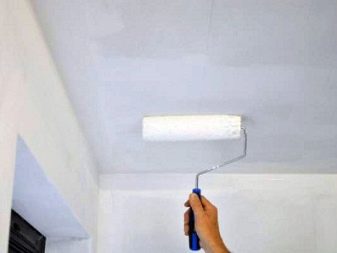
This is especially true before installing the floor: for example, an epoxy self-leveling floor, the base of which has not been treated with a primer, will quickly lose its visual appeal, and flaws are possible at the very moment of installation. This material is used not only for interior decoration: such a reinforcement is good for outdoor work (for example, for processing the facade). The consistency of the finished liquid resembles milk. A slight odor may be felt in some varieties during processing.
It is sold more often in cans and cans of various sizes, this allows you to choose the optimal amount of funds for processing the required area. Craftsmen often buy large cans, which excludes the purchase of additional material if necessary.
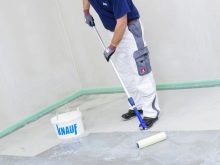


The color of the primer depends on the brand. The product has a certain viscosity, if it comes into contact with the skin, it is difficult to wash it off if you do not do it right away.
Advantages and disadvantages
Acrylic primer has many advantages. It is a solution that does more than simply bond the finishing material to the treated surface. This component of the repair is distinguished by deep penetration - depending on the type, the plane is processed to a depth of 5 to 10 cm. A primer is necessary to strengthen the base, giving it strength. Even loose walls, which are characterized by porosity, become more homogeneous and denser after processing. If the composition has thickened, it can be diluted with plain water without loss of quality characteristics.
In addition to adhesion, this composition contributes to the fact that the walls absorb less moisture, this is important when pasting them with wallpaper. Reducing the absorbency of the base allows you to reduce the consumption of the applied finishing material. This has a noticeable effect on building materials such as self-leveling floors, wallpaper glue and even paint, for which the use of a primer allows you to achieve greater gloss.
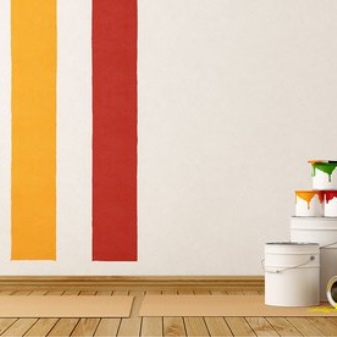
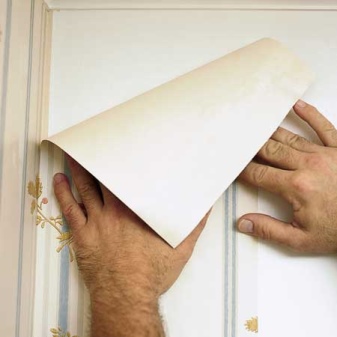
Moreover, processing the surface of the base with a primer allows you to paint dark surfaces of the surface with light colors of paints.
This material does not reduce the vapor permeability of the surface.During the drying process, a crystal lattice is created on it, which acts as a frame that holds the finishing materials. Along with the formation of a mesh acrylic the primer protects the surface from the effects of harmful microorganisms... This liquid is also active in interaction with a surface on which there are minor impurities that impede the finish of the plane. The primer removes the negative effects of pollution.
In the case of paint, after applying a primer, streaks, gaps and visible problem areas are minimized. It is noted that it is much easier and more convenient to apply paints and varnishes to a surface treated with acrylic primer.
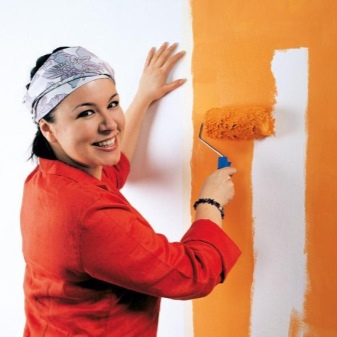
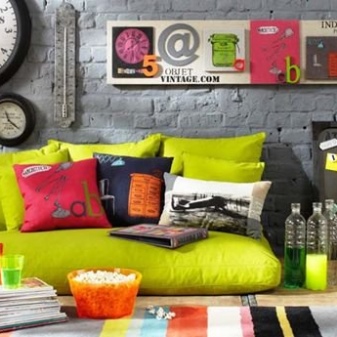
This product dries quickly and therefore does not slow down the repair process. Such a primer is suitable for the chemical composition of the main part of the facing materials, it stands out for its hydrophobic qualities, which allows you to apply wallpaper glue and paint as evenly as possible. The disadvantage of an acrylic primer is the impossibility of covering the surface of ferrous metals.
Other disadvantages include a higher consumption of concentrated material, which requires a clear correspondence between water and mixture. Some varieties are not environmentally friendly. Therefore, in addition to outdoor work, their use is unacceptable. A universal composition cannot fully provide those characteristics that are inherent in each specific species.

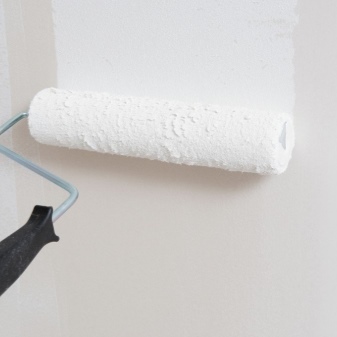
Acrylic primer has a dispersion of 0.05 to 0.15 microns. This allows the particles to penetrate as deep as possible, giving the surface to be treated uniformly.
Some varieties can be added to the composition of special acrylic paints (no more than 15% of the available volume).
The type of solvent used can be of the usual, fast, slow type of action, which explains the different degrees of drying of the primer. The shelf life is 2 years.
The texture of the primer is matt. On average, 1 liter is enough for 8-9 liters of square meters (with 1 layer of treatment). However, this indicator can vary depending on the type of base: the more the walls absorb, the more primers will go away.
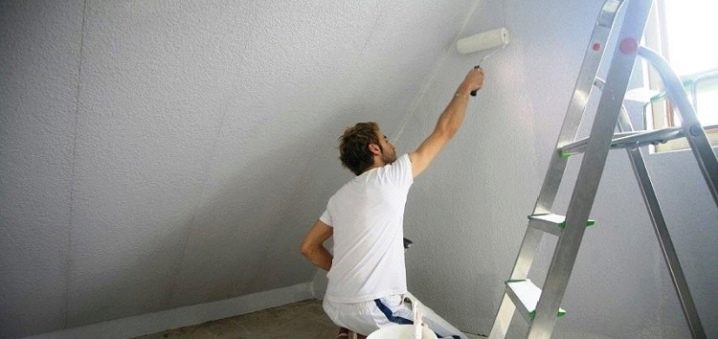
This material loses its properties in frost. Do not store acrylic primer in the cold. The total shelf life should not exceed 1 year. You need to put the product out of the reach of children. If the soil gets into your eyes, they urgently need to be rinsed with water.
This auxiliary material prevents mortar mixtures from drying out, eliminates the formation of air bubbles on the leveling layer. The application is suitable for cement-concrete screeds (including heated versions), ceramic and silicate bricks, wood, metal (iron ore), gypsum plasters, lime.

High coverage polyacrylic varieties prevent blue discoloration and decay, helping to protect against dampness. They are good for preparing the substrate for parquet varnish, various enamels, oil paints, marble chips and structural plaster.
Views
In fact, acrylic primer can be called universal. It is the final stage of surface preparation for dispersion paints based on acrylic, drywall, brick and GLV. A different type of solvent can be used in its composition.
For example, water-dispersive varieties are intended for indoor use. They do not have a characteristic odor and are a harmless type of raw material. Organic counterparts give off resistance to weathering, so such material can be used to prepare planes for facade decoration. The use of such a solution will protect the surface from mold.
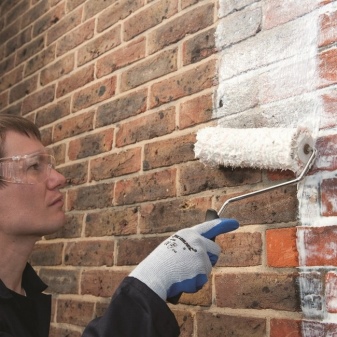

Conventionally, acrylic primer can be divided into four types:
- penetrating;
- deeply penetrating;
- strengthening;
- adhesive.
At the same time, each type of acrylic primer is different.The difference is manifested in the capabilities of each type, color, method of preparation. There are not only universal varieties of such material: today on the construction market you can buy special primers for concrete, walls and wood, as well as anti-corrosion options.
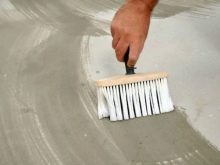

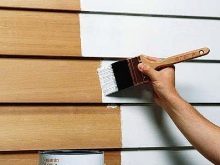
According to the release form, acrylic primer is divided into 3 types:
- dry concentrate;
- ready-made solution;
- mixture in a spray can.
A concentrated solution of a strengthening acrylic primer must be diluted to the desired consistency with plain water. This technique allows you to save on the purchase of a solution and carry out the treatment of surfaces (walls, floors, ceilings) without thinking about a possible shortage. The classic version is convenient for those who are not used to preparing the solution on their own. The can is economical.
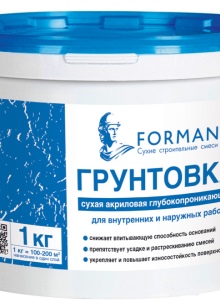
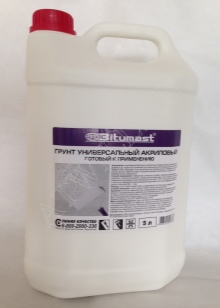

What is the difference?
The difference between the species is obvious, since they differ in the type of impact:
- The first category stands out due to the lower penetrating ability... The main focus of the action is on the surface itself. Such material is convenient where there is no significant need for deep impregnation. The impregnating composition clogs the pores and microcracks of the wall (floor, ceiling), which leads to the same absorbency of the base in each area.
- The second variety is different viscosity level... It is best used for unreliable grounds. In particular, these can be planes erected in violation of the technology, for example, it can be concrete or plaster with a predominance of sand. Such a foundation crumbles, therefore, without thorough preparation, it will not be possible to do anything with it for a long time. The product has a high price, this contributed to the appearance of a mass of cheap analogues, which makes it difficult to choose a quality product.
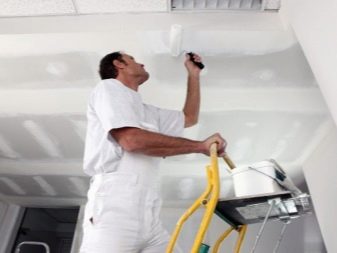
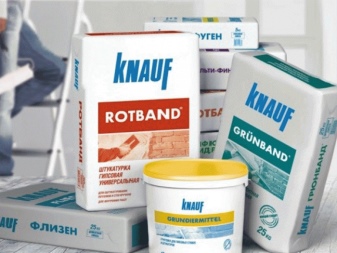
- Strengthening soil has the maximum effect. It is designed for the most challenging and weak surface types. This variety does not only deal with cracks: it is able to bind dust and works for poorly adhered base areas.
- Adhesive acrylic primer has its own differences: after processing, it leaves a rather dense film with a characteristic roughness on the base. Unlike previous analogs, this acrylic-based antiseptic primer is distinguished by the ability to level the base, preparing it for the final facing.
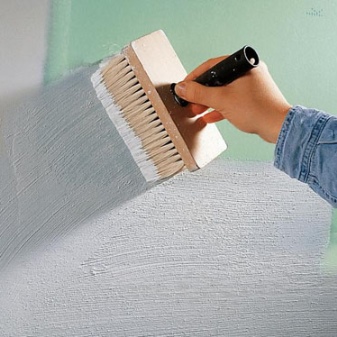
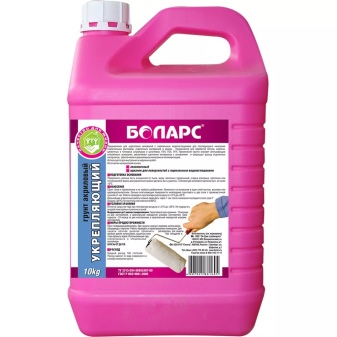
Volume
The amount of acrylic or latex primer depends on generally accepted manufacturer standards. Today it is sold in cans, buckets and cans.
Depending on the manufacturer's standards, the volume can be 1, 2.8, 5, 7, 10 liters. The soil for plastic is minimal: the balloon is enough for 2.5 square meters. m. Raw materials in a 10-liter canister are enough to handle the walls of a small kitchen for 2 times.
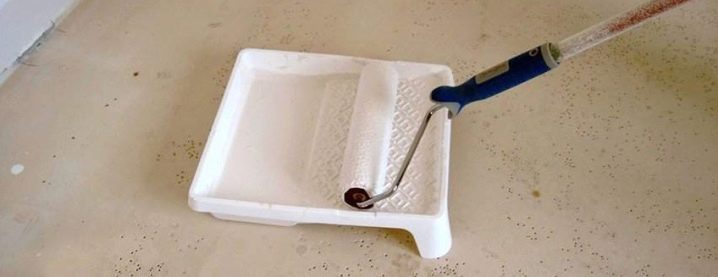
Colors
The color of the latex primer depends on the technology of the manufacturing company. In the classic version, the solution is clear (colorless). Among the varieties there are materials in white and pink, which is associated with the development of a material with an emphasis on light and color fastness. Some products have a light gray tone.
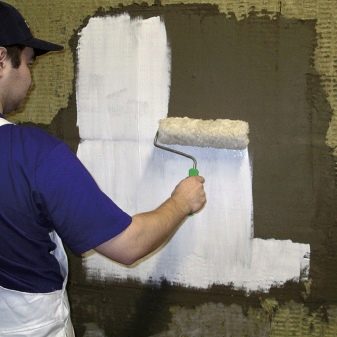
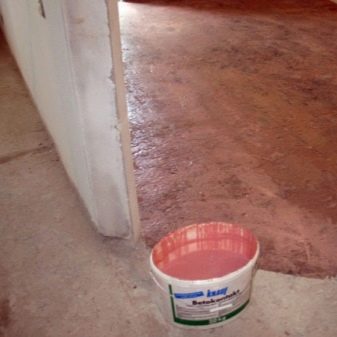
Which one is better to choose?
When choosing a type of acrylic primer, there are several criteria to consider. This will help you understand which type of material is worth buying.
- Choose products from a trusted brand. Cheap materials are not always able to cope with the processing at the proper level.
- Aerosol is worth considering only if a minimum amount of work is planned, minor correction of the damaged area is needed (for example, you need to change the area of contaminated wallpaper, dismantle damaged tiles).
- Having studied all the varieties, give preference to a narrow-profile purpose, determining the type of surface. The universal variety has taken a little from each species, it will not give the proper level of training.
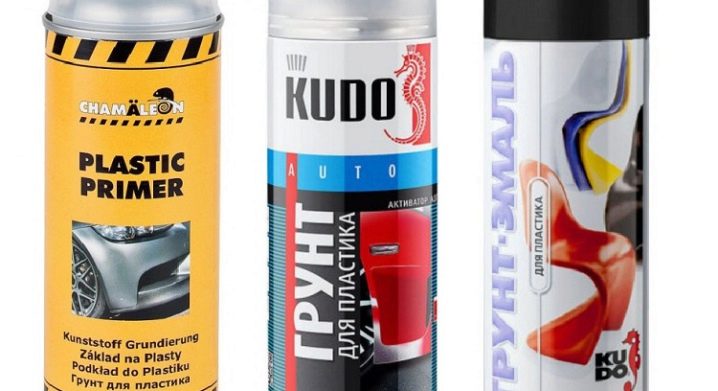
- When choosing a product, consider your capabilities: if you do not want to stir the concentrate on your own until a homogeneous solution is obtained, or are afraid that you will not guess the consistency, you should give preference to the finished soil.
- Start from the type of surface and the specific finish you are going to use: the primer for concrete and metal is different.
- Pay attention to the version with anti-corrosion properties if the finishing of the metal facade is planned.
- In rooms with high humidity, a variety that prevents the formation of fungus and mold will be appropriate.
Pay attention to the packaging. Usually the manufacturer specifies the features of a particular material being produced. This will allow you to understand how suitable this primer is for treating the surfaces of your house (apartment). If the type of raw material and the surface to be treated does not match, a repeated repair is not ruled out soon.
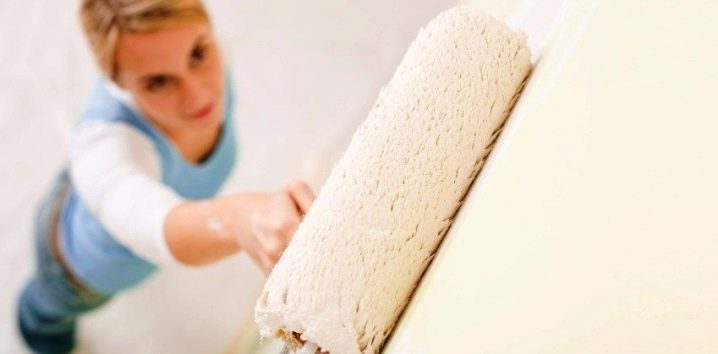
Tips & Tricks
Any primer must be used strictly in accordance with the technological instructions. This will improve the quality and practical characteristics of any facing raw materials.
Acrylic primer is applied strictly to a clean and prepared surface. In this case, the surface to be processed should be as grease-free, dry and smooth as possible. It is worth paying attention to the shelf life: after it has passed, the material loses its qualities, so it will be pointless to wait for excellent adhesion from the primer.
Depending on the size of the area, a roller and a brush are used for processing. A brush is needed for corners and tight spots that the roller cannot reach. The roller allows you to significantly simplify and speed up the surface treatment, to make the distribution of the primer solution even.
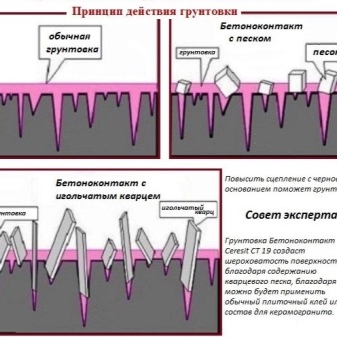
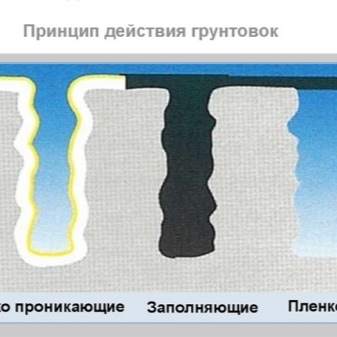
If the solution is concentrated, it is necessary to prepare it strictly according to the instructions indicated by the manufacturer on the package. Processing can be carried out at temperatures from +6 to 35 degrees. If you need to prime the plane outdoors, you can work at a temperature of +12 degrees.
Experts recommend treating the surface twice. In this case, each layer applied to the surface must dry well. The minimum allowable interval between two treatments is 4-5 hours (provided that the room is hot). The remains are tightly closed and removed to a dark place. You cannot store them in the light. The storage temperature corresponds to the processing temperature.
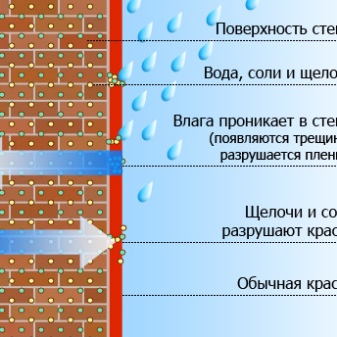
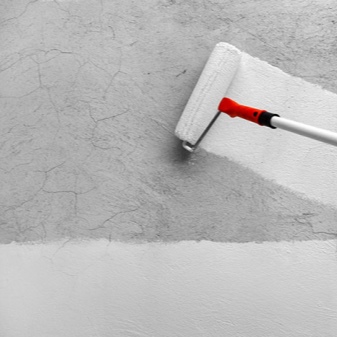
Manufacturers and reviews
A wide range of acrylic primers is available on the modern construction market. Among the abundance of goods, the most discussed materials are the solutions of the companies:
- "Nortex soil" - antiseptic deep-penetrating products for preparation for water-dispersion varnishes and paints.
- "Lacra" - high quality latex primer based on aqueous acrylic dispersion with anti-mildew additives.
- Cerisit - solutions of deep penetration in the form of an aqueous dispersion of acrylic copolymers, supplemented with pigments and mineral additives.
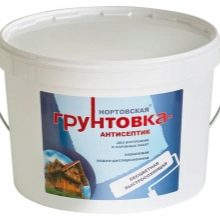

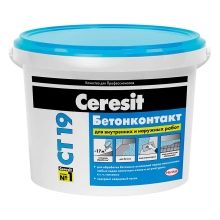
- "Prospectors" - universal primer for interior use, ready-to-dilute product for highly absorbent surfaces.
- Vika - acrylic primer of two tones (gray and white), intended for the treatment of surfaces made of metal and plastic, with anti-corrosion properties.
- Caparol - a universal product for indoor and outdoor use, intended for mineral types of surfaces.


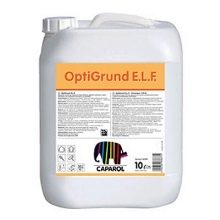
- Knauf - a universal preparation for the treatment of walls, floors and ceilings with adhesive properties and surface leveling.
- "Styrene" - a deep penetration primer based on acrylic copolymers, intended for highly absorbent surfaces, including brick, concrete, gypsum, cement.
- "Tex" - a primer-waterproofing agent for dedusting porous types of surfaces for putty, painting, wallpaper.
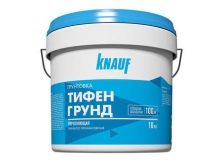
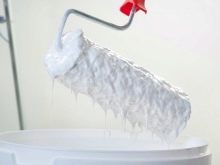
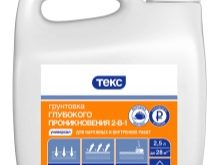
In general, the reviews about these formulations are positive. The comments indicate a large consumption of domestic soil. Sometimes it takes much more to process the floor and walls than indicated by the manufacturer.
For the nuances of choosing a primer, see below.













The comment was sent successfully.